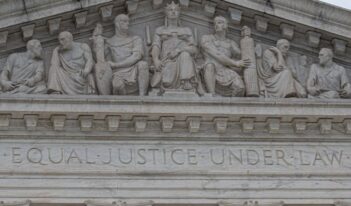
The Court unanimously agrees that the Nollan/Dolan test applies to administrative and legislative exactions.
Ever since 1995, when the U.S. Supreme Court declined to review an Atlanta ordinance that required parking lot owners to plant trees, Justice Clarence Thomas made clear that he was itching to consider whether there was a difference between “administrative” and “legislative” exactions.
In the 2024 term, Justice Thomas was able to scratch that itch. In Sheetz v. County of El Dorado, California, the Court unanimously decided that exactions imposed on property owners via legislation are not exempt from the exactions test articulated in Nollan v. California Coastal Commission and Dolan v. City of Tigard. Of course, in this Supreme Court, unanimous decisions are like icebergs; the Court has agreed on the narrowest possible legal question and has left the most important and controversial questions floating right beneath the surface another day to wreck ships (be they municipalities or landowners). These unresolved questions are (1) whether impact fees are exactions, and (2) whether generalized legislative exactions and individualized administrative exactions must satisfy the exactions test in the same way.
But before we dive into these unresolved issues, many readers may appreciate a short refresher on exactions.
Most simply, exactions are demands made by localities in exchange for development permits. Exactions aim to mediate the tension between private development and the public infrastructure that supports it. For example, a property owner’s plan to expand its store may increase traffic congestion on the adjoining street. A municipality may condition the store owner’s building permit on the owner dedicating a strip of land to the locality so that the street can be widened to accommodate the increase in traffic.
A line of Supreme Court jurisprudence says that sometimes exactions can be takings that violate the U.S. Constitution’s Takings Clause. Offending exactions can be identified using a three-part test.
Under the first step, the unconstitutional conditions doctrine poses a threshold question: If the locality demanded the benefit outside of the permitting context, would it be a taking? If the answer is yes, then we are dealing with an exaction, and the locality has the duty of proving that the exaction does not violate steps two and three.
The “Nollan/Dolan” or “exactions” test constitutes the remaining two steps and it explains that an exaction is not an unconstitutional taking if there is (1) an essential nexus between the harm created by the permitted activity and the thing exacted in exchange for the permit, and (2) the scope of the exaction is roughly proportional to the harm or cost created by the permitted activity. This jurisprudence has generally emphasized the ad hoc, administrative nature of exactions determinations as justification for shifting the burden to the government to satisfy this heightened level of scrutiny.
The Supreme Court’s decision in Sheetz, although narrow, is nevertheless significant. The justices unanimously decided that exactions imposed by legislation are not exempt from the Nollan/Dolan test.
This leads us to the facts in Sheetz. George Sheetz owned land in El Dorado County near South Lake Tahoe, California. He sought a building permit to improve the land with a single-family home, and the County conditioned the permit on Sheetz paying a traffic impact fee. Sheetz paid the impact fee under protest, received his development permit, and then he sued to challenge the impact fee as an unconstitutional taking. The California Court of Appeals relied on California Supreme Court precedent in holding that the Nollan/Dolan test did not apply to Sheetz’s permit since the case involved an impact fee, not a demand of an interest in real property and because it was applied via generally applicable ordinance rather than an ad hoc administrative process. Upon reviewing only the second holding, all nine members of the U.S. Supreme Court disagreed with the lower court’s decision—holding instead that legislative action is not entirely exempt from Nollan/Dolan review. They remanded the case to the California Court of Appeals.
The first unresolved question is whether an impact fee should be considered an exaction at all. Sheetz argued that money is property and the government’s demand for money without just compensation is an unconstitutional taking. In response, the County pointed to the line of Supreme Court precedent dating back to the 19th century that stands for the premise that “property taxes, user fees, and similar laws and regulations that may impose financial burdens on property owners” are not takings. Justice Ketanji Brown Jackson probed this distinction between exactions and property taxes during oral arguments. In her concurrence, Justice Sonia Sotomayor obliquely endorsed the view that impact fees are not exactions by reminding the court that the unconstitutional conditions doctrine’s threshold question had not been decided in this case.
The second, and more controversial, unresolved question is whether the exactions test must be applied in the same way for legislative and administrative action. That is, is every landowner entitled to have its locality prove that an impact fee or exaction imposed on its property is essentially related and roughly proportional to the impact of its specific development project? Or can a locality satisfy its burden of proving this test in some other way, such as by providing careful analysis of these metrics in crafting their fee schedules for categories of similarly situated properties? The County argued that requiring municipalities to prove legislative exactions in the same way that they must prove administrative exactions would be the “death knell” of these legislative tools and would unfairly shift the costs of development to other taxpayers. In contrast, Sheetz argued that the takings clause entitles property owners to no less than an individualized justification. Justices Brett Kavanaugh and Neil Gorsuch each wrote concurrences to emphatically agree with opposite sides of this question.
Given the deep division between the justices in their concurrences, it seems inevitable that this second question will be decided by the Supreme Court at some time in the future. It is unlikely that Sheetz’s complaint will be the vehicle for resolving this question, since the lower courts have an opportunity to dispense with Sheetz by deciding that an impact fee does not satisfy the threshold unconstitutional conditions question. That is, an impact fee, like property taxes, can be imposed by a locality absent a permitting request without being an unconstitutional taking. The majority opinion and Justice Gorsuch’s and Justice Kavanaugh’s concurrences were all silent about this question, which may indicate a willingness to tolerate such a finding by the lower court on remand.
When the second question does eventually come before the Supreme Court, it seems that there may be a way to navigate between the two poles staked out in the concurrences. Interestingly, Justice Thomas cited to one such model back in his 1995 dissent to the denial of certiorari for the Atlanta parking lots case. The Washington Supreme Court determined that King County’s parks ordinance had satisfied the Nollan/Dolan test by establishing an essential nexus between new development and the need for public park space, and by using a formula designed to ensure that the exaction requirement imposed via statute was roughly proportional to the need created by individual, permitted developments.
To summarize the current state of exactions—we certainly cannot call it a final analysis—we now know that exactions are subject to the heightened scrutiny of the Nollan/Dolan test regardless of whether they are imposed via generalized legislative action or individualized administrative action. We are waiting to find out whether the means for satisfying the test differs between the two sources of exactions. We are also waiting to see whether impact fees can even be considered exactions rather than financial burdens that a jurisdiction has the right to impose on property owners.
This essay is part of a series, titled The Supreme Court’s 2023-2024 Regulatory Term.




